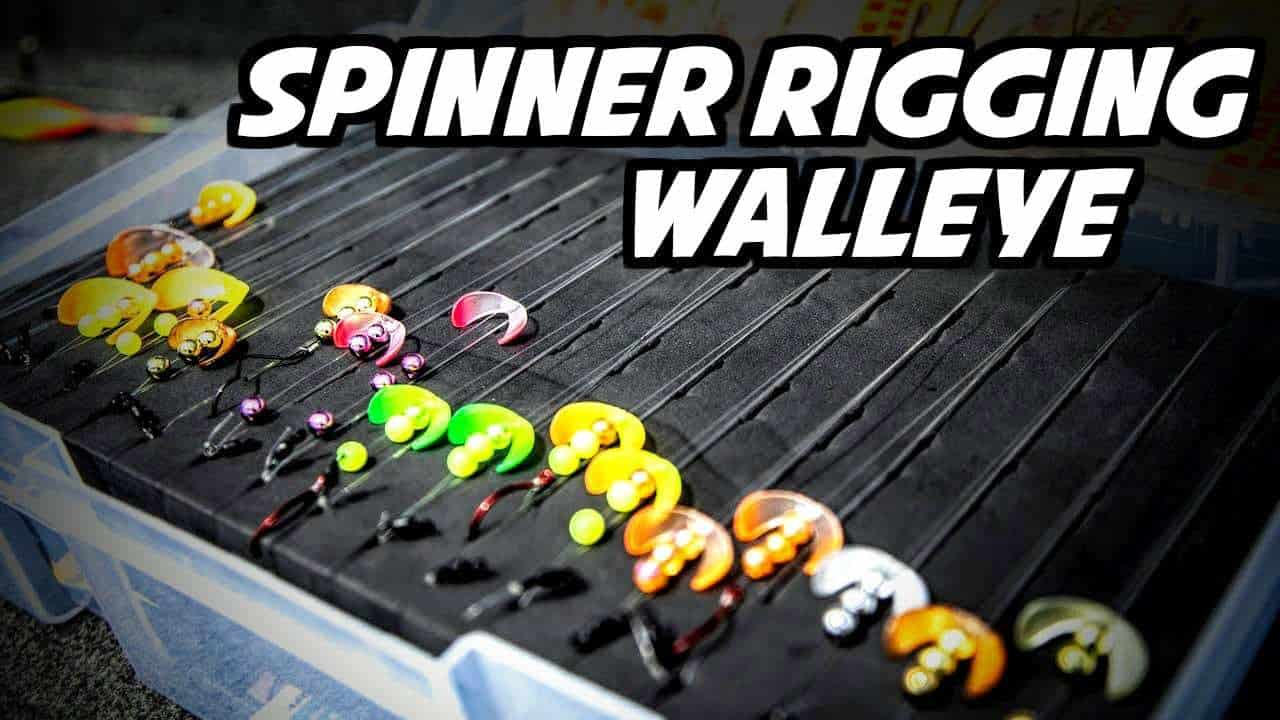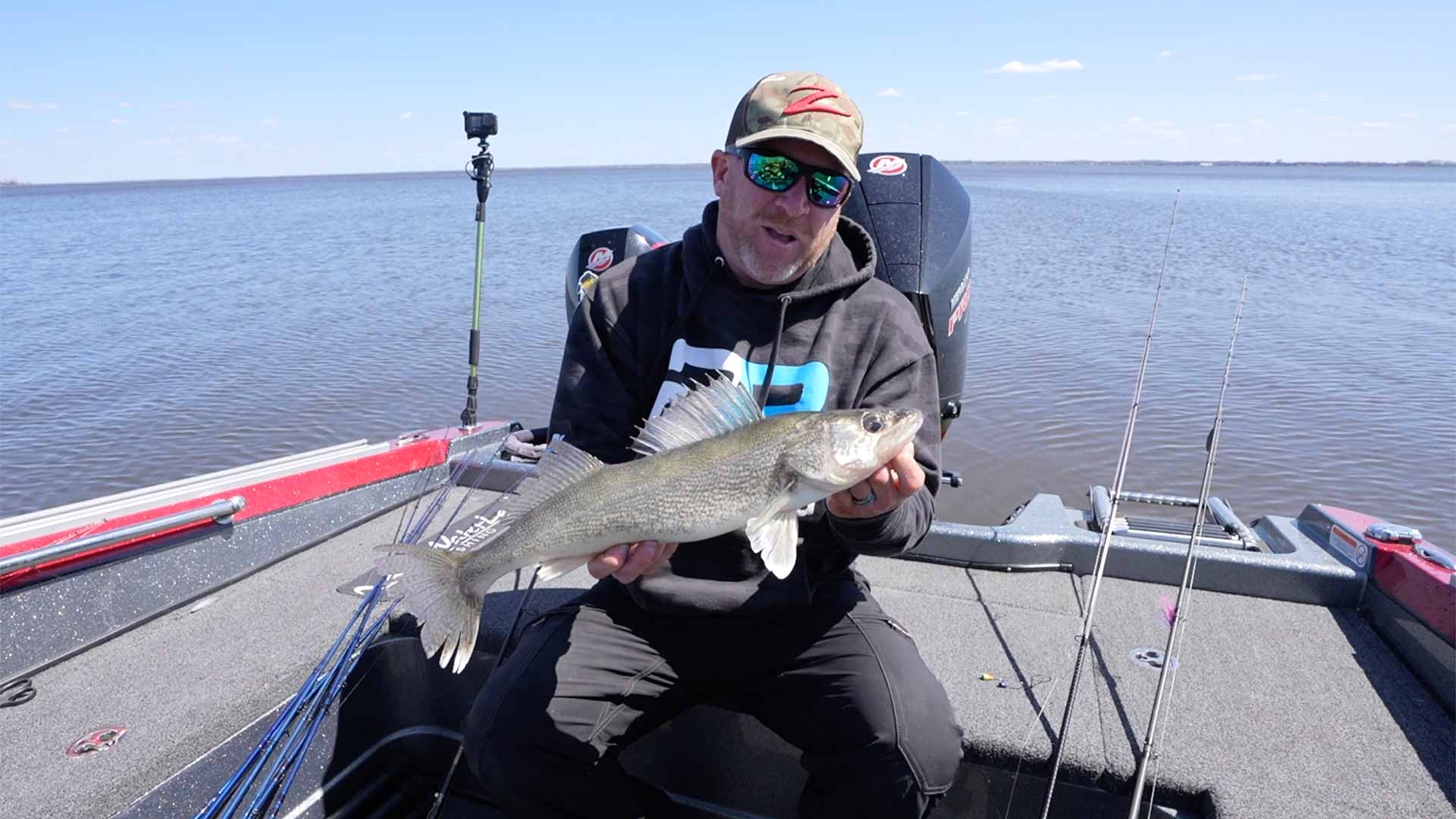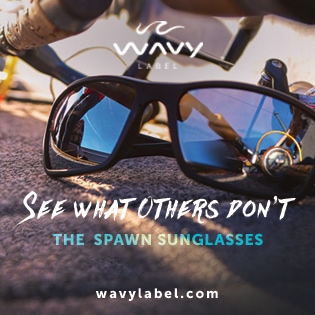Spinner rig for walleye — it’s a tactic that every good up-north angler has in his back pocket for summertime walleye. It’s an excellent technique for moving quickly and covering water, whether you’re using night crawlers, minnows or leeches. In this video, fishing guide Brad Hawthorne shares everything you need to know to get started “pulling blades”.
Spinner rigging is a highly effective technique for targeting walleye. It involves using a spinner blade attached to a leader with beads and a hook. In this article, we will discuss some advanced tips and techniques for spinner rigging that will help you catch more walleye.
Choosing the Right Blade
Blades are an essential component of a spinner rig. They come in various shapes, sizes, and materials, each with its own unique characteristics. Here are some key points to consider when selecting a blade:
- Blade Speed: Different blades are designed to spin at different speeds. Some blades, like the butterfly blade, can be run at a wide range of speeds, from a quarter mile an hour to a mile and a half an hour. Experiment with different blade speeds to find what works best for you.
- Blade Material: While metal blades are the traditional choice, there are now many other options available, such as polycarbonate and plastic blades. These alternative materials can provide different actions and vibrations in the water, which can be enticing to walleye. Don’t be afraid to try out different blade materials to see what the fish respond to.
- Blade Color: Color selection is important when it comes to spinner blades. Natural colors like gold, silver, and white are often effective, but don’t be afraid to experiment with different colors. Some anglers have had success with unconventional colors like chartreuse, purple, and pink. Pay attention to the conditions and the fish’s preferences to determine the best color for your spinner rig.
Choosing the Right Beads
Beads are another important component of a spinner rig. They not only add visual appeal but also play a role in attracting fish. Here are some tips for choosing the right beads:
- Bead Color: Bead color can make a difference in attracting walleye. For natural-colored blades like gold, consider using red, gold, and silver beads. For fire tiger patterns, use chartreuse, orange, and green beads. Purple and silver blades can be paired with purple and pink beads. Experiment with different bead color combinations to find what works best for you.
- Bead Placement: When rigging your spinner, consider the placement of the beads. If your blade is long, it’s a good idea to have a sufficient number of beads to extend beyond the blade. This helps prevent the blade from slapping the fish in the face and provides a more natural presentation. Additionally, the inside of the spinning blade can reflect the color of the beads, so bead color plays a role in attracting fish.
Choosing the Right Weight
The weight you choose for your spinner rig depends on the fishing conditions and the depth you’re targeting. Here are some guidelines to consider:
- Bottom Bouncers and Slick Sticks: If you’re fishing in snaggy areas or need to maintain contact with the bottom, consider using bottom bouncers or slick sticks as weights. These weights are designed to keep your lure down without getting snagged up all the time. They are more expensive than cheap weights, but they are worth it because they attract fish with their color and are more snag-resistant.
- In-line Weights: In-line weights are a good choice when fishing in weedy areas or in shallower depths. Use a half to five-eighths ounce weight with a three to four-foot spinner rig in ten to fifteen feet of water. Adjust the weight based on the conditions and the depth you’re fishing.
- Bottom Bouncers and 3-Way Rigs: When fishing in deeper lakes, consider using bottom bouncers or 3-way rigs. Use a two to four-ounce bell sinker with a six to eight-foot spinner rig for pulling spinners on the mud. Adjust the weight and rig based on the depth and the fishing conditions.
Choosing the Right Leader Length
The length of your leader plays a crucial role in spinner rigging. It affects the presentation and can make a difference in attracting fish. Here are some guidelines to consider:
- Water Clarity: In clear bodies of water like Mille Lacs, use longer leader lengths to separate the weight from the lure and make it look more natural. Use leader lengths ranging from eight to sixteen feet. In stained water, you can go shorter, but never shorter than three feet.
- Fish Activity: Pay attention to the fish’s behavior and adjust your leader length accordingly. If you notice that fish are not biting, try extending your leader length. Sometimes, a longer leader can make a significant difference in catching more fish.
- Experimentation: Don’t be afraid to experiment with different leader lengths to find what works best for you. Sometimes, a slight adjustment in leader length can make a big difference in your success rate.
Choosing the Right Line
The type of line you use for spinner rigging can also impact your success. Here are some considerations when choosing the right line:
- Fluorocarbon: Fluorocarbon line is a popular choice for spinner rigging, especially in clear bodies of water where fish may be line shy. Use heavier fluorocarbon line, around 12 to 14 pounds, to ensure it can handle the weight and the fight of a walleye.
- Braid: Braid line is a good option when fishing over structure or rocks, as it is more resistant to snagging and can transmit bottom content feedback. Pair braid line with a slick stick for maximum sensitivity. You don’t need an expensive rod to feel the feedback, as even a stainless-steel rod can do the job.
- Stained Water: In stained water, you can use braid or fluorocarbon line, depending on your preference. Experiment with both to see which one yields better results for you.
Choosing the Right Rod and Reel
When it comes to rod and reel selection for spinner rigging, you don’t need to break the bank. Here are some tips for choosing the right setup:
- Baitcasters: For pulling spinners, a baitcaster with a flipping switch is a convenient choice. This feature allows you to let line out without having to thumb the line, especially when using heavy weights. You don’t need an expensive baitcaster, as long as it has this feature.
- Spinning Gear: When drifting spinners, spinning gear is preferred. Use a medium-action spinning rod that allows the fish to load on the rod. This type of rod is more forgiving and allows you to feel the bite and start leaning into the fish before setting the hook.
By considering these advanced tips and techniques for spinner rigging, you can increase your chances of catching more walleye. Remember to experiment with different blade, bead, weight, leader length, line, and rod and reel combinations to find what works best for you in different fishing conditions. Pay attention to the water clarity, fish activity, and speed factor to dial in your presentation. Don’t be afraid to push the limits and try different techniques to see what the fish respond to. With practice and experience, you’ll become a master at spinner rigging for walleye.
In conclusion, spinner rigging is a versatile and effective technique for targeting walleye. By understanding the key components of a spinner rig and how they can be adjusted to suit different fishing conditions, you can increase your chances of success on the water. Remember to consider the blade speed, material, and color, as well as the bead color and placement. Choose the right weight for the fishing conditions and depth you’re targeting, and adjust your leader length based on water clarity and fish activity. Select the appropriate line and rod and reel setup for spinner rigging, and don’t be afraid to experiment and push the limits. With these tips and techniques, you’ll be well-equipped to catch more walleye using spinner rigs.










